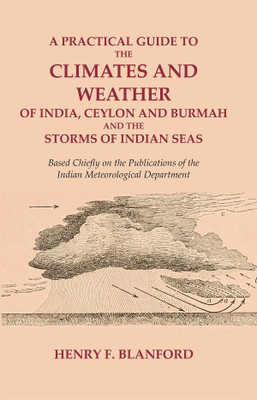A Practical Guide to the Climates and Weather of India, Ceylon and Burmah and the Storms of Indian Seas: Based Chiefly on the Publications of the Indian Meteorological Department(Paperback, Henry F. Blanford)
Quick Overview
Product Price Comparison
About The Book: In this book the meteorological department of India has provided valuable information about the weather and climate of India, but this knowledge is often inaccessible to the lay public. A need exists for a simple and popular manual that explains meteorological observations and their practical applications, particularly for those engaged in administration, agriculture, sanitation, engineering works, and navigation of Indian seas. The present work aims to meet this need by selecting and presenting practical information from abundant materials available in clear and concise language, avoiding technical discussion and using familiar expressions from popular weather reports and other literature. About The Author: Henry Francis Blanford (1834ŌĆō1893) was a British meteorologist and palaeontologist who worked in India. He was a younger brother of the naturalist William Thomas Blanford, both of whom joined the Geological Survey of India in 1855. Henry was the first official meteorologist in India, appointed as Imperial Meteorological Reporter in 1875. His interest in meteorology grew after his appointment as professor of science at the Presidency College from 1862 to 1874. In 1864, cyclones hit eastern India, killing 70,000 and damaging the port of Calcutta. Blanford co-wrote a report on the subject and was subsequently appointed secretary of the commission created to establish a system of storm warnings to protect Calcutta's harbour. Blanford was appointed Imperial Meteorological Reporter and placed in charge of the Bengal Province Meteorological Department, which covered Calcutta, in 1867. The regionalised nature of these local organisations was soon found to be a problem, and in 1875, the India Meteorological Department was founded, with Blanford in charge. The department would gather data across the country, analyse and disseminate information. He initiated publication of the department's scientific results (Report of the Meteorological Reporter) and made long-term weather forecasts using the link between the nature of snow in the Himalayas and rainfall in the rest of India.

